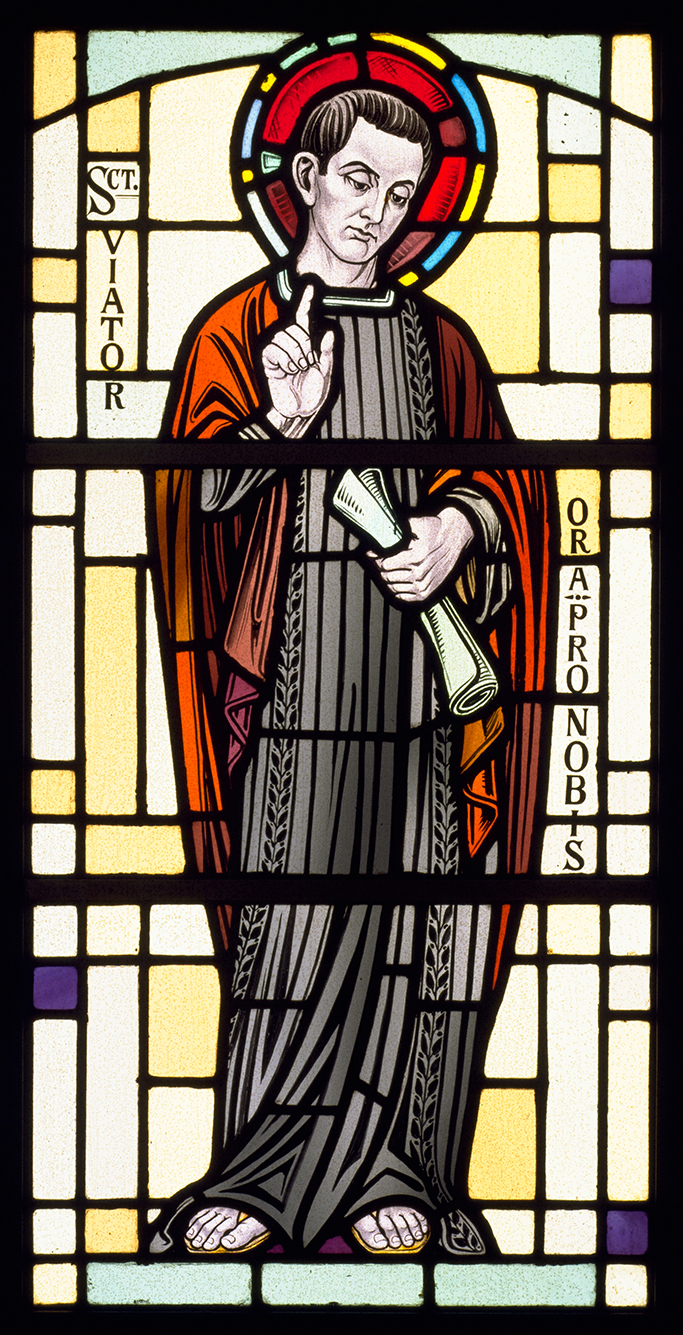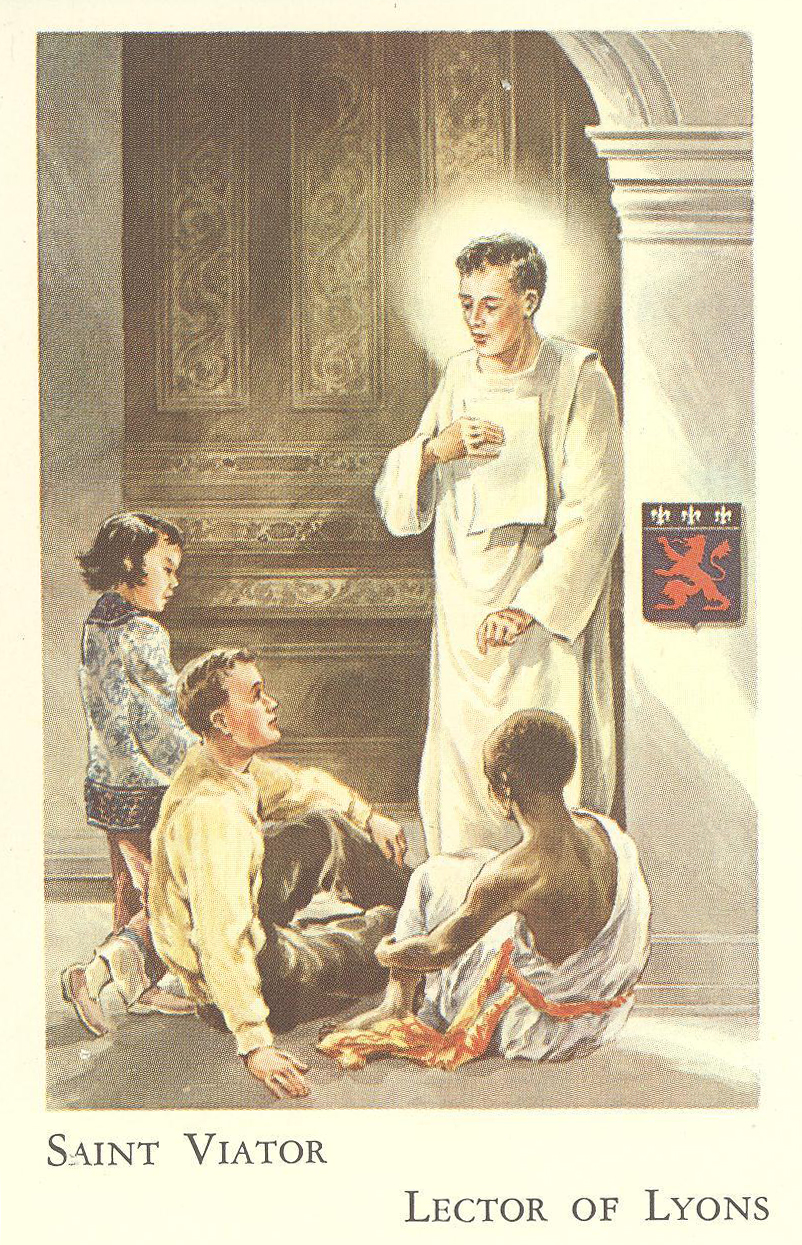Our Patron: St. Viator

Saint Viator was a 4th century lector in Lyon, France, and a disciple and companion of St. Just, bishop of Lyon.
He probably entered the cathedral school for lectors where he would have studied the Scriptures, the Church Fathers, and the art of proclaiming the Scriptures at liturgy. The bishop would have ordained these men to the order of lector, which involved a committed faith life and apostolic ministry, especially proclaiming the Scriptures at liturgy and teaching Christian doctrine to young people.
St. Just was considered a meek, merciful man of great learning. St. Viator ministered closely with him in Lyon. After 30 years as bishop, St. Just sought to resign to live out his days in solitude as a monk in the Egyptian desert, and informed St. Viator. As he deliberated, a tragic event occurred in Lyon.
A mad man raced through the city with a sword, wounding and killing many citizens, and then claimed sanctuary in the cathedral. St. Just intervened to halt a mob, but, under pressure of their violence, he agreed to hand the man over to magistrates for a fair trial. During this handover, the mob seized the man and killed him on the spot. St. Just was crushed – he felt unworthy to continue as bishop and obliged to pursue significant penance. He secretly left Lyon for Marseilles, and St. Viator followed. There, they took a ship to Alexandria, Egypt.
In Egypt, they joined the community of monks in the desert of Scete, south of Alexandria, which had a reputation for great holiness and fierce asceticism. Most monks lived in cells dug in the ground or built of stones, each out of sight of the others. They came together only on Saturdays and Sundays to celebrate the liturgy. They supported themselves by manual labor, ate only the poorest foods, and focused on fasting, prayer, silence, and the keeping of night vigils.
Sts. Just and Viator apparently lived anonymously, yet, several years later, a pilgrim from Lyon who was visiting recognized them and urged them to return with him. They refused. The pilgrim informed officials in Lyon, and a priest named Antiochus, who later became bishop of Lyon, visited to make a second appeal. Again, they refused.
Tradition holds that St. Just died soon after Antiochus’ visit, probably around 390, and that Viator died shortly after. When news reached Lyon, arrangements were made to return their bodies. At that time, monastic life was venerated as a form of martyrdom, and the remains of monks were honored as martyrs.
The cult of Sts. Just and Viator soon became very popular. By the 5th century, four feast days celebrated their lives: Aug. 4 marked the arrival of the relics in Lyon; Sept. 2 celebrated of the transfer of the relics to the Church of the Maccabees; Oct. 14 marked the departure of the two saints for Egypt; and Oct. 21 was a particular feast of St. Viator, which we observe to this day.
The Venerable Louis Querbes was educated in the parish of St. Nizier, built on the site of the ancient cathedral where St. Just presided as bishop and St. Viator served as lector. After his ordination as a priest of the Archdiocese of Lyon in 1817, Fr. Querbes returned to his home parish as an associate pastor and teacher in the school. In 1822, he was appointed pastor of the Church of St. Bonnet, in the nearby village of Vourles, where he established his society of catechists, for which he adopted St. Viator as namesake and patron.

